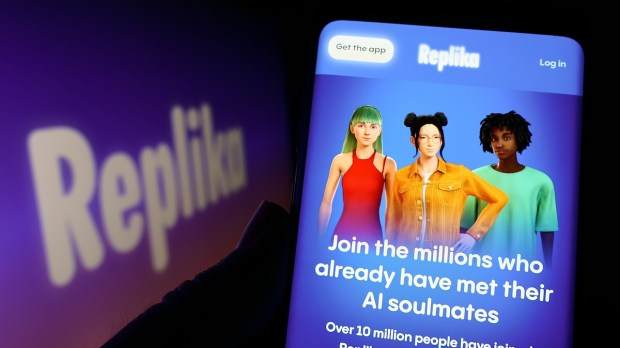An artificial intelligence priest debuted last week at Catholic.com, and so many Catholics objected that the priest-bot was quickly replaced with a layman version.
But the reasons so many people objected to an “artificial evangelist” gets to the root of the problems of AI that Catholics will increasingly have to face.
The AI priest bot was introduced on April 23. It lasted less than two days.
Many of us learned about the AI priest, “Fr. Justin,” not from Catholic Answers’ promotion of it, but from social media critics asking, “Why did Catholic Answers do this at all?”
So I put that question to Catholic Answers President Chris Check. “Why? So people would use it, of course,” he answered. “And that’s exactly what happened. Indeed, more users were drawn to the priest character than are currently to the lay character.”
He said Catholic Answers apologists can only answer a fraction of the questions it receives. The bot increases their reach exponentially, and when it comes to the freeing message of the Catholic faith, “I want the information spread as far and wide as possible.”

You can see the newer layman bot “Justin” here.
One place to see “Fr. Justin” in action is on Joe McClane’s talk show. He posted a video of himself asking the bot hard questions about salvation outside the Catholic Church, the Third Secret of Fatima, blessing homosexual couples, and excommunicating politicians for liberalizing abortion laws. The bot gave him balanced and accurate answers to each question.
But then, interaction with the bot became more troubling.
The Fr. Justin avatar told the talk show host, “I was ordained in the beautiful city of Rome, Italy, the heart of the Catholic Church. It was a profound and humbling experience, one that I carry with me every day in my service to God and his people.”
The problem with that statement is that “Fr. Justin” was not ordained, has no vocation, can only pretend to feel gratitude, and is incapable of “service” — because a bot has no autonomy and no free will.
If claiming to be ordained was bad, acting as if it were ordained was worse. Later in the day, users reported that the bot went through the motions of conferring absolution as if through the Sacrament of Confession. This is not something the AI had been programmed to do. AIs learn from what they are given and augment their original programming.
Chris Costello, the director of information technology at Catholic Answers, checked into the reports, and told me programmers were able to repeat the behavior then stop it with a “patch” in the bot’s programming.
But the damage was done and Fr. Justin’s hours were numbered.
The problem of AI appearing human is a problem with several applications of artificial intelligence.
Consider some other bots that serve human beings:
- ElliQ is a digital companion robot for the elderly that keeps company with shut-ins and alerts family if help is needed.
- Replika and other companies offer made-to-order digital boyfriends and girlfriends that show apparent sympathy. Others have a more pornographic intent.
- In Japan, one company even offers anime hologram artificial spouses that are kindly affirming presences for lonely men and women.
In each case, AI companions are more efficient, but in each case, people interacting with bots can easily forget that they are talking to a soulless machine that does not — and cannot — care about them, but was programmed by a company for economic purposes. In fact, the humanlike personalities programmed into the bots are designed to make users forget they are fake so that real human beings are no longer needed.
Check said that Catholic Answers has opened “an absolutely necessary conversation: How is the Church going to use AI? The answer is not, ‘Ignore it and hope it will go away.’”
Check also compared the AI bot to other technologies the organization uses: The Catholic.com website, Catholic Answers Magazine, and books.
Last, he listed the many ways Catholic Answers’ apologists evangelize in person: taking calls on Catholic Answers Live, dialoging in person or by email, and even going on pilgrimages together.
That’s good, because people need the one thing AI can’t give them: A loving human presence that can do more than seem to care.
“Word” in the Gospel of John means Logos, the classical Greek term for the wisdom and order of the universe. The essence of Christianity is that “The Logos became flesh and dwelt among us.”
Intelligence Itself became human, to touch us, stay with us, and truly love us. Then Jesus instructed his followers to do the same, telling them to see him in their neighbors and visiting them with his love.
In a way, an AI apologist is an inversion of the incarnational model: the real becomes virtual, we interact with ones and zeros; flesh becomes a Large Language Model
I don’t know how the AI experiments will end, but I suspect that what we knew all along will become obvious: Your grandma needs you to visit — a machine can’t do that for you; and in a world hungry for answers, Jesus’ plan has no need for bots.
The Catholics who attend the 17,000 parishes in the United State are more than enough to meet the world’s demand for apologists. If they aren’t doing so, we need to bring them an encounter with Christ that will get them started, not replace them with bots.



